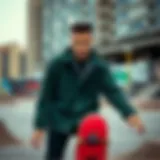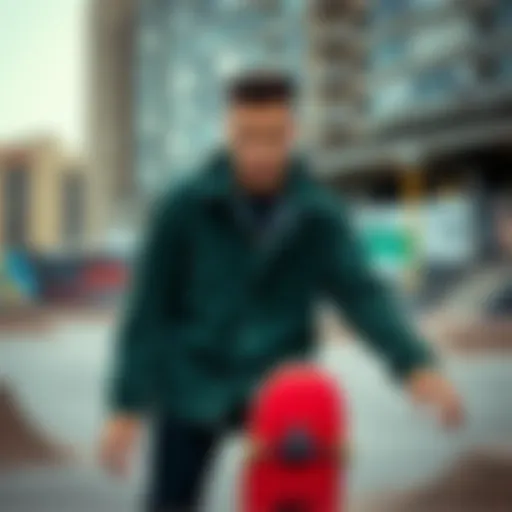Exploring Braille Skateboarding Shoes for All Skaters
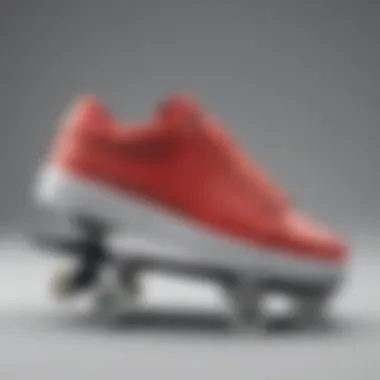

Intro
In a world where skateboarding often appears exclusive, Braille skateboarding shoes are redefining the boundaries and weaving inclusivity into the fabric of the sport. Designed precisely for skaters with visual impairments, these shoes combine innovative features with solid performance to provide everyone, regardless of their level of sight, an equal footing on the skateboard. The focus here will be on understanding how these shoes achieve that goal while enhancing the skater's experience and fostering community.
Braille shoes unearth a broad spectrum of design considerations and material choices that not only cater to the practical needs of their users but also echo the artistic roots of skate culture. From the grip of the sole to the fit of the shoe, every aspect is engineered for accessibility without skimping on style. This careful thought process helps break down the barriers that often separate various skateboarding communities.
By gathering insights from users and analyzing market trends, this overview will delve into the essence of Braille skateboarding shoes, offering a sneak peek into the techniques skaters employ, the gear they select, and the rich culture of inclusivity that these shoes inspire.
Tricks and Techniques
Mastering the Heelflip
To keep the excitement alive in skateboarding, mastering tricks like the heelflip is essential, even more so for those using Braille skate shoes. The heelflip, a trick that requires precise foot placement and timing, can be challenging for beginners, especially those tackling it for the first time. With Braille's intuitive design, the shoes are specially crafted to offer a secure grip on the board which is crucial for executing this trick.
- Foot Positioning: Place your front foot across the board's middle with toes angled slightly inward.
- The Flick: When you pop the tail down, you’ll want to flick your heel off the corner of the board as you jump.
This special design allows users to feel the board and understand how to initiate the trick more effectively, setting a solid foundation for their skateboarding journey.
Tips for Consistent Landings
Landing consistently isn’t just about skill; it’s about understanding how to use the features of your shoes to your advantage. Here’s how Braille skate shoes can help:
- Low-profile Design: Their design enables skaters to feel the board better, enhancing control during the landing phase.
- Shock Absorption: Look for shoes that offer good cushioning to minimize impact once you land.
If you’re looking to land more consistently, practice your timing and always keep your weight centered over the skateboard.
Skate Gear and Equipment
Choosing the Right Skateboard
Selecting a skateboard that complements Braille shoes involves considering the board’s dimensions and materials. Skaters need a board that provides balance and durability. It’s wise to seek:_
- Deck Material: A good wooden deck provides strength and responsiveness.
- Wheel Size: Larger wheels navigate rough terrains better while smaller wheels are suited for smooth surfaces.
A solid skateboard paired with Braille shoes opens opportunities for further exploration in skating styles and terrains.
Essential Safety Gear for Skaters
While skating, safety should be non-negotiable. Wearing the right gear can drastically reduce the risk of injuries. Here’s a brief rundown of essential safety gear:
- Helmet: Protects the head, absorbing the impact of falls.
- Knee and Elbow Pads: Shields joints and adds an extra layer of cushioning during slams.
- Wrist Guards: Supports wrists, preventing sprains when performing tricks.
Choosing safety gear designed for both style and function highlights the culture of solidarity in skateboarding, ensuring that an inclusive environment is at the forefront.
"Accessibility in skateboarding isn't just a feature; it's a fundamental right that everyone deserves."
As we navigate through the world of Braille skateboarding shoes, it's crucial to recognize the impact these shoes have not just on performance but on creating a space where everyone can express themselves through skating.
Prelims to Braille Skateboarding Shoes
The burgeoning field of skateboarding has seen an impressive evolution, particularly concerning accessibility. Braille skateboarding shoes represent a significant shift that not only enhances performance but also breaks down barriers faced by skaters with visual impairments. As skateboarding continues to diversify, it’s crucial to examine how these specialized shoes are designed with the unique needs of their users in mind. The focus on accessibility in sports gear reflects a wider societal trend—affirming that everyone should have the opportunity to participate and thrive in their chosen activities.
The Rise of Accessibility in Skateboarding
In recent years, there’s been a notable surge in advocacy for inclusivity in extreme sports, especially skateboarding. Various organizations and communities are working tirelessly to promote awareness and provide resources to ensure nobody is left out.
Examples of initiatives include:
- Introductory workshops for visually impaired individuals to learn skateboarding basics.
- All-inclusive skate parks that allow for adaptive equipment and provide a space for individuals of all abilities to practice.
- Collaborations with brands that prioritize accessibility in their product designs.
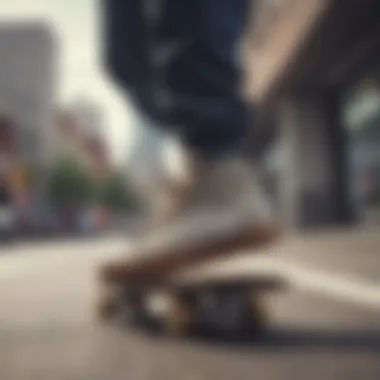

The rise of accessibility also resonates with skateboard culture, which has often prided itself on being a free-spirited and inclusive space. By investing in specialized footwear like Braille skateboarding shoes, the sport endorses a communal ethos where all skaters can share their passion, showcasing their talents without the shadow of physical limitations.
Braille Shoes: An Overview
Braille skateboarding shoes are ingeniously designed with the intention of meeting both functional and aesthetic needs of visually impaired skaters. These shoes integrate elements that promote confidence and enhance the overall skateboarding experience.
What sets Braille shoes apart? Here are some of the standout features:
- Tactile indicators: Distinct textures or raised elements on the shoe ensure that users can determine the correct orientation quickly.
- Optimized grip: An emphasis on specialized grip technology allows skaters to maintain better control on their board.
- Durable construction: The shoes are crafted from materials that withstand wear and tear, ensuring longevity for skaters who hit the pavement regularly.
Through these thoughtful innovations, Braille skateboarding shoes resonate on personal and communal levels, empowering individuals and strengthening the skateboarding culture to be more inclusive.
"Inclusive design isn’t just a trend; it’s a necessary evolution in how sports engage and uplift individuals from all walks of life."
The introduction of Braille skateboarding shoes marks a pivotal moment for both the skateboarding community and the broader society. As their popularity grows, the conversation around accessibility continues to expand, highlighting the importance of inclusivity in sportswear.
Understanding the Design Philosophy
The design philosophy behind Braille skateboarding shoes is not just about making a product that looks good on the shelf. It's about addressing the genuine needs of a diverse range of skateboarders, particularly those with visual impairments. Crafting shoes that marry functionality with aesthetic appeal is crucial. It ensures that the product resonates with users on multiple levels—emotional, practical, and cultural. This section will delve into the crucial aspects of this philosophy, emphasizing how thoughtful design can empower users and enhance their skating experience.
Target Audience and Market Needs
Understanding who these shoes are for is essential. The primary audience includes skateboarders with visual impairments, but the design can also appeal to a broader market looking for innovative and functional skatewear. The need for inclusive products in sports gear is growing. Companies that can tap into this demand not only stand to gain market share but also contribute positively to the community. Designers often conduct thorough market research to identify gaps in the current offerings and adapt their products accordingly.
"Inclusivity in design creates pathways for everyone to participate, fostering a richer culture in skateboarding."
Technical Features of Braille Shoes
Unique Material Choices
The specific materials used in creating Braille skateboarding shoes play a significant role in their overall effectiveness. Designers often choose lightweight yet strong materials to provide the necessary support without adding bulk to the shoe. One crucial characteristic is the use of synthetic fibers which are not only durable but also flexible. This makes for a shoe that can withstand the wear and tear of urban skating while ensuring comfort. A unique feature in this context is the moisture-wicking fabric that helps regulate temperature inside the shoe. This property is advantageous as it keeps the feet dry even during intense skate sessions.
Grip Technology
An essential element for any skateboard shoe is its grip technology. The sole material and tread pattern are crafted to provide the best traction possible. This aspect can significantly enhance performance, allowing for better control and stability on the board. For Braille skateboarding shoes, the use of rubber compounds with specific textures ensures that skaters have the grip they need, enhancing confidence as they perform tricks. A notable feature is the unique tread design that accommodates various tricks while giving additional support during landings.
Durability and Support
Durability is another critical consideration. Skateboarding can be hard on footwear, so these shoes are designed to endure rough treatment. Reinforced stitching and strategic material patches in high-wear areas bolster their longevity. The support factor, especially around the ankle, is also designed with skaters in mind. Cushioned collars offer better stability for the ankles, reducing the risk of injuries. This combination of durability and support is precisely why Braille shoes are positioned as reliable choices for various skill levels, accommodating both novice and experienced skaters alike.
Aesthetic and Functional Design Elements
Color Schemes and Style Choices
In the world of skateboarding, appearance can be just as important as performance. Braille skate shoes tend to incorporate vibrant color schemes that appeal to younger audiences while also offering more subdued tones for those who prefer a classic look. A significant aspect of these choices is how they reflect personal identity and style. The unique feature of customizable options allows skaters to express themselves while still benefiting from the shoe's intended functionality. It's fascinating to see how color and style can influence a product's acceptance in the market.
Branding and Identity
Branding plays a pivotal role in the success of Braille skateboarding shoes. The way a brand positions itself within the skate community can impact consumer trust and loyalty. Notably, brands are now taking a stand on social issues, including disability representation in sports. This consideration adds depth to their identity and appeals to a socially conscious customer base. The branding approach often incorporates grassroots marketing strategies that resonate with the skate culture, thus bridging the gap between product and community—making the shoes not just a piece of gear but a symbol of inclusivity.
The Importance of Accessibility in Skate Culture
Accessibility in skateboarding is not just a buzzword; it's a fundamental shift that transforms how we perceive sports and community inclusivity. For many, skateboarding has long served as a form of self-expression, an outlet for creativity, and a medium to forge connections. However, the traditional landscape hasn't always been welcoming to everyone. As Braille skateboarding shoes hit the market, they embody a significant stride towards an inclusive environment, enabling individuals with visual impairments to partake fully in the skate culture.
Embracing accessibility within this domain offers numerous benefits. Firstly, it paves the way for empowerment through design, allowing skaters to engage meaningfully with the sport. Additionally, it nurtures a sense of belonging among diverse groups, illustrating that skateboarding isn't just for the few; it’s for anyone willing to roll with the punches, regardless of their physical abilities or limitations.
"When barriers are broken down, new paths emerge. Accessibility in skate culture opens the door for endless possibilities and creativity."
Empowerment through Design
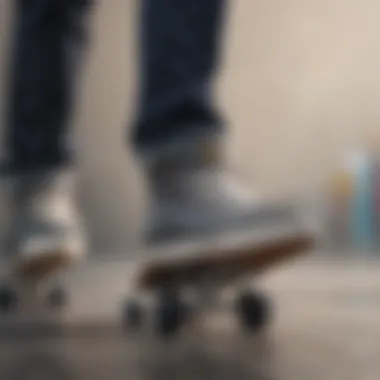

Empowerment in skate culture originates from thoughtful design that considers the needs of diverse participants. The Braille skateboarding shoes, for instance, integrate elements that cater to visually impaired skaters, allowing them to not only participate but excel in their sporting adventures. Features such as tactile indicators on the shoe, adaptive fit adjustments, and lightweight materials contribute significantly to the experience of users.
In essence, these design innovations do more than just enhance functionality; they inspire confidence. Skaters donning these shoes feel a renewed sense of autonomy, knowing that they possess tools that cater to their unique requirements. It’s like trading a clunky old skateboard for a slick, high-performance model—everyone deserves that upgrade, especially when it comes to safety and ease of movement.
Community Engagement and Inclusivity
The inclusion of accessible skateboarding shoes also plays a critical role in fostering community engagement. With the advent of Braille shoes, more people have the chance to pick up a skateboard—transforming isolated practices into communal experiences. Groups once sidelined by functionality now find themselves at skate parks, challenging the notion that the sport belongs exclusively to the abled.
Furthermore, this community aspect extends beyond skaters. Educators, parents, and retailers find themselves more engaged as well, driven to create spaces that welcome everyone. Check out forums such as Reddit and social media platforms to see firsthand accounts of how the culture is shifting. The buzz around events and promotions centered on accessibility speaks to a broader movement aiming to break down entrenched barriers.
In summary, the intersection of skate culture and accessibility not only enriches individual experiences but also strengthens the overall fabric of the skateboarding community. It challenges perceptions, encourages participation, and ultimately leads to a more compelling and diverse scene. By embracing these innovations, we're setting the stage for a future where skateboarding is indeed for everyone.
Performance Analysis
When it comes to skateboarding, performance is the name of the game. It’s about more than just looking good on a board; it’s about how shoes can enhance the rider's experience. Braille skateboarding shoes are crafted not just to meet the needs, but to elevate the performance of skaters, especially those who might face challenges due to visual impairments. The focus on performance analysis allows us to fully grasp how these shoes influence both the skateboarding experience and the community surrounding the sport.
User Testimonials and Feedback
Real-life experiences often serve as the best lens through which to assess a product's effectiveness. Users of Braille skateboarding shoes frequently express how significantly the shoes enhance their skating experience.
"When I wear Braille shoes, it feels like the board is an extension of my body. I can feel the texture of the grip under my feet, which gives me confidence to try tricks I wouldn't have otherwise attempted," shares a user from a popular skate forum.
Feedback like this highlights both the tangible benefits of the footwear and the psychological boost that comes from increased confidence on the board. Many testimonials point to features such as improved grip and unique material composition that allow for better tactile interaction with the skateboard. For someone navigating obstacles, that can make all the difference.
Comparative Performance Review
Braille Skateboarding Shoes vs. Traditional Gear
Comparing Braille skateboarding shoes with traditional skateboard footwear sheds light on the unique advantages they offer. Traditional gear might prioritize style or brand recognition, but Braille shoes are designed with a focus on functionality and accessibility.
One notable aspect is the textured grip that caters specifically to skaters with visual impairments. This tactile feedback helps users gauge their positioning on the board, allowing them to execute moves with more precision. In addition to providing an inclusive experience, this feature has garnered attention for its capability to improve performance across the board—literally.
Braille skateboarding shoes also boast enhanced durability, making them a fantastic option for daily use. Their composition often withstands the wear and tear that comes from rigorous skateboarding. This reliability is crucial for any skateboarder aiming to push their limits.
Suitability for Different Skill Levels
When it comes to catering to various skill levels, Braille skateboarding shoes show remarkable versatility. For beginners, these shoes offer stability and comfort that build confidence as they learn the basics of skating. A soft yet durable sole allows for a forgiving experience as new riders find their footing.
For experienced skaters, the shoes maximize performance potential. The emphasis on tactile sensations means advanced users can hone their skills further, feeling the board in a way that’s often overlooked in more generic footwear. Skaters working on tricks that require precision will appreciate how these shoes aid in making minute adjustments during their maneuvers.
Market Trends and Consumer Awareness
In today’s fast-evolving world, the intersection of fashion and functionality often dictates what consumers reach for, and skateboarding gear is no exception. The rise of Braille skateboarding shoes illustrates a shift in an industry traditionally dominated by aesthetics, showing that performance can be both accessible and stylish. This segment dives into how shifting consumer perspectives and market trends are reshaping the landscape of inclusive sportswear.
The Growth of Inclusive Sportswear
The demand for inclusive sportswear has gained notable momentum over the past few years. As more consumers look for products that reflect diversity and accessibility, brands are being pressed to address these needs not just as an afterthought but as integral to their design and marketing strategies.
- Rising Awareness: This boom stems from a greater societal awareness about various forms of disabilities. Inclusion is making its way into conversations surrounding all kinds of athletic gear, leading companies to rethink how they design their products.
- Consumer Demand: Enthusiasts and activists alike are pushing for skate brands to diversify their offerings. The market is demanding more than just a standard skate shoe; people want to see innovations that consider different abilities, lifestyles, and styles.
- Expanding Demographics: As skateboarding becomes increasingly inclusive, brands are tapping into new customer bases. This not only boosts sales but also helps form a larger community of skaters. The notion that anyone can sktae, regardless of ability, is a powerful message.
This changing landscape reflects a profound shift in consumer values, and brands that capitalize on this trend stand to gain loyalty and visibility in a crowded market.
Impact of Social Media and Skateboarding Influencers
In the age of Instagram and TikTok, skateboarding influencers wield significant power to shape consumer behavior. Their ability to connect with audiences presents an avenue for impactful storytelling around Braille skateboarding shoes.
- Visibility of Inclusive Models: Influencers that represent diverse communities are shining a spotlight on inclusive skate gear, allowing fans to see it in action. When influential figures wear and promote products designed for specific needs, the authenticity drives interest and can result in increased sales.
- Storytelling: Social media platforms serve as powerful vehicles for telling the stories behind the products. A heartfelt testimonial about overcoming obstacles through skateboarding can spark interest, creating a connection that transcends mere purchasing.
- Building Community: Influencers engage their followers in conversations around inclusion and accessibility in skate culture. This participatory approach fosters community and drives home the message that skateboarding is for everyone.
"When we see people like us shredding the gnar, it inspires us to push our limits!"
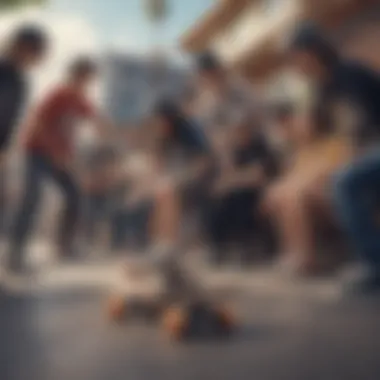

Overall, the blend of market trends focused on inclusivity and the influence of social media is setting the stage for a new era in the skateboarding world. Not only do these shoes cater to specific needs, but they also promote a vibrant, inclusive community that resonates with a modern audience.
Challenges and Limitations
When tackling the subject of Braille skateboarding shoes, it is essential to consider the myriad of challenges and limitations that can influence their reception and overall success in the market. Understanding these constraints not only highlights the struggles these innovative shoes face, but also shines a light on the determination of the brands to evolve and adapt.
Barriers to Adoption
Adoption of Braille skateboarding shoes faces several barriers right from the get-go. One notable issue is awareness. Many potential users simply don't know that such products exist. In a culture often dominated by traditional skate brands, introducing the concept of inclusive footwear can be likened to trying to sell ice to an Eskimo. It takes persistent marketing efforts and community outreach to spread the word.
Moreover, there's another layer: availability. While some brands are beginning to embrace inclusivity in their product line-ups, not all skaters have equal access to such options. In some regions or demographic segments, these specialized products might be harder to find. Without adequate distribution channels, addressing the needs of visually impaired skaters remains a daunting task.
Consider this: in a global market saturated with footwear choices, unique niche products like Braille shoes sometimes struggle against the mainstream options. Price could also become a deterrent. Compared to conventional skateboarding shoes, specialized features often drive the cost up. Skateboarders, especially younger ones, might shy away from buying these shoes, worrying that their investment won’t yield enough value in their skating experience.
Balancing Style and Functionality
An essential aspect of Braille skateboarding shoes is the delicate balance between style and functionality. Skate culture places a high demand on aesthetics, often prioritizing looks at the risk of sacrificing performance. Skaters want their shoes to not only perform well but look good doing it. This can create a sticky situation for designers.
Many might perceive Braille shoes as less appealing due to their functional enhancements. The fear is that prioritizing accessibility features—designs that facilitate movement for visually impaired skaters—could render them visually unappealing or bulky. But innovation is key. By blending style elements with practical features, brands could cater to both sets of customers without losing their identity.
The feedback loop is crucial here; anticipating user preferences while securing the essential technical specifications needed for real-world skating can be a particularly tricky proposition. The hope is to combine the visual statement that skaters want with the tactile feedback that adaptive skaters require. Moreover, customer education plays a huge role. If brands can effectively showcase how design elements serve both accessibility and aesthetics, it'll help bridge the gap between styling and functionality.
"In order for innovation in skate footwear to take hold, it must resonate with skaters not just as a necessity, but as a choice that embraces their lifestyle."
To navigate these challenges, brands must continue to listen and learn from their audience, ensuring that each new model not only meets physical needs but also expresses the artistic flair inherent in skateboard culture.
Future of Braille Skateboarding Shoes
The future of Braille skateboarding shoes paints a dynamic picture of what’s possible at the intersection of accessibility and performance in the skateboarding world. As we look ahead, it’s increasingly clear that developments in design and technology can bring forth both innovative features and a more inclusive environment. This is crucial, not only for skaters with visual impairments but for the skating community at large. By focusing on specific advancements and how they pertain to the skateboarding experience, we can appreciate the myriad benefits that lie ahead.
Innovations in Skateboarding Footwear
When we talk about innovations in skateboarding footwear, we’re diving into cutting-edge materials and technologies that promise to elevate the experience for all riders. The future hinges on integrating smart technologies into shoe designs, where features like pressure sensors and haptic feedback systems could guide skaters, particularly those with visual disabilities. Imagine footwear that communicates terrain changes through subtle vibrations, enhancing the rider's spatial awareness without compromising their style.
Furthermore, eco-friendly materials hold significant promise. Sustainability is not just a buzzword anymore; it’s becoming an essential aspect of modern manufacturing. Brands like Nike and Adidas have started pressing for more sustainable practices, and we can expect that this will trickle down to specialized footwear like Braille skateboarding shoes. Using recycled plastics, biodegradable materials, and low-impact manufacturing processes can reduce the carbon footprint while appealing to environmentally conscious consumers.
Some specific innovations to watch for include:
- 3D Printing Technology: Personalized fits and designs tailored to individual needs can be offered. 3D printing allows for creative shapes and functionality that were previously impractical.
- Enhanced Grip Systems: Future designs might see revolutionary grip technologies that can adapt based on conditions — wet, dry, or even varying textures.
- Lightweight yet Durable Construction: Advancements in materials promise shoes that feel light on your feet but can withstand the wear and tear of extensive skating.
"Innovation in skateboarding footwear is set to redefine not just how we ride, but who can ride, pushing the boundaries of skater capabilities and communities alike."
Potential for Collaborative Designs
Collaboration must be at the forefront of the push towards enhancing Braille skateboarding shoes. By merging talents from different industries such as fashion, tech, and sports, we can yield products that don’t just serve their purpose but also carry cultural significance. Imagine designers who specialize in urban streetwear teaming up with engineers from the tech world to craft shoes that speak to both aesthetics and functionality.
Moreover, partnerships can strengthen community engagement. Local skate shops and brands can collaborate with non-profits focused on accessibility, creating limited edition lines that energize both the skate culture and support those who use it. These initiatives can help garner support and awareness about the needs of differently-abled skaters, fostering a sense of unity and celebration around diversity in skating.
Several potential avenues for these designs might include:
- Community-Centric Collaborations: Inviting skaters with disabilities to help shape the designs ensures the focus remains directly aligned with user needs.
- Influencer Partnerships: Skateboarding influencers can play a crucial role in promoting and authenticating the products, ensuring they reach a broader audience.
- Limited Edition Releases: Crafting shoes that reflect specific themes or events in skateboarding culture helps keep the design fresh while generating excitement within the community.
Culmination
The topic of Braille skateboarding shoes holds significant importance in the broader conversation about accessibility in sports. These shoes are not just a piece of equipment; they are a gateway into the skating community for many individuals with visual impairments. The integration of thoughtful design elements that address both functionality and empowerment is a compelling narrative in today’s world of sportswear.
Reflecting on the Impact
The impact of Braille skateboarding shoes transcends mere performance metrics. They symbolize progress within skate culture, illustrating a shift where inclusion is prioritized not just as an afterthought but as a core value. As we reflect on this journey, it’s clear that these shoes do more than enhance the skills of the wearer—they foster a sense of belonging among skaters who might have felt excluded previously. The stories shared by users speak volumes about their experiences. A skater might say, "Wearing these shoes makes me feel like I can ride with anyone, regardless of our differences." This emotional connection, paired with the physical aspects of skating, redefines the user experience, challenging outdated notions of who belongs in skateboarding.
"The essence of skateboarding is freedom. With accessible shoes, that freedom can reach everyone."
The Path Forward for Skateboarding and Inclusion
Looking ahead, the potential for further innovations in Braille skateboarding shoes and general inclusive design in sportswear is promising. Collaborations with different brands can play a pivotal role, creating unique lines that not only catch the eye but also cater to specific needs of diverse skate communities. The ongoing dialogue around accessibility can inspire designers and manufacturers alike to think outside the box. There are pressing considerations for the industry: how can we continue to innovate while ensuring that our designs remain inclusive? The path forward hinges on community response and continued feedback from users themselves. Engaging with skaters about their experiences and needs will solidify a foundation that the skate culture can build upon.
As we wrap up this exploration, the landscape of skateboarding is gradually shifting towards a more inclusive future, indicating a progressive framework where every rider can find their place on the board.
